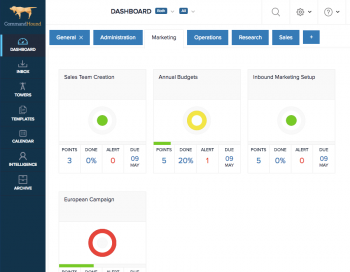Have you ever taken a short break at work to read an article online and accidentally fallen into an internet rabbit hole, only to emerge an hour later, praying that no one noticed how disconnected you were from your work?
Insights: Management
We have found that every team is made up of two broad types of people– the Idea Makers and the Doers. If you’ve ever taken a Myers Briggs test, you might know these two groups as Judgers (J) and Perceivers (P).
There has been a lot of buzz recently about WOOP. No, not the sound you make when you’re really excited about something. We’re talking about W.O.O.P., a productivity solution developed by Dr. Gabriele Oettingen that provides a framework for accomplishing big goals one step at a time. W.O.O.P. stands for “Wish, Outcome, Obstacle, Plan,” and it outlines the four steps that make it most easy for you to actually accomplish your goals.
Have you ever found yourself in meetings where the same issues and action items seem to get discussed over and over?
If the mechanics of documenting action items, defining a due date, and assigning it to somebody are in place then, why don’t things get done? Why do we need to talk about them again at subsequent meetings? There are actually some very simple steps you can take to make sure that your meetings stay on track.
Whether working in an office with fewer than ten people, or a massive corporation with thousands of employees, we have all come across issues of how to hold individual team members accountable for their work.
As projects and teams get larger, more complicated, and less well-defined, it can be increasingly difficult to make sure that team members are staying on top of their own tasks so that the whole project stays on track.
Although CEOs often dictate company culture, and might sometimes even seem above the rules, recent research indicates that company structures are increasingly necessary to monitor upper-level executives and to hold them accountable for their behavior.
Putting practices and strategies in place to hold executives accountable to ethical requirements is necessary and can save corporations many headaches in the long run.
I’ve always believed that accountability is achieved when people feel a sense of belonging and personal pride of being part of a great organization, with great leaders, doing something worthwhile.
Once employees truly buy into the meaning and mission of an organization, all they need is a road map of where the organization is headed, what needs to be done, and when it needs to be completed. With this road map they can see how their work contributes to the overall success of the company.
Expanding the scope of a project is not a bad thing when properly managed. in fact, changing requirements, constraints, needs, context, or priorities in a project is more norm than rarity.
But a problem arises when change creeps into a project unnoticed. When project sponsors, project managers and team members realize that they are working on a bigger and more ambitious project than originally planned, and that they have begun to miss deadlines consistently and to exceed budgets, it’s probably too late.
As a partner, audit manager, or staff accountant in a large accounting firm doing external audits for large public and private companies, you may be wondering how to hold your client accountable for the components of the audit for which the client is responsible.
A recent survey found ISO 9001-certified organizations are 7% more profitable than those that are uncertified.
85% of ISO certified organizations reported increased brand perception, increased demand for products and services, and higher market share.









